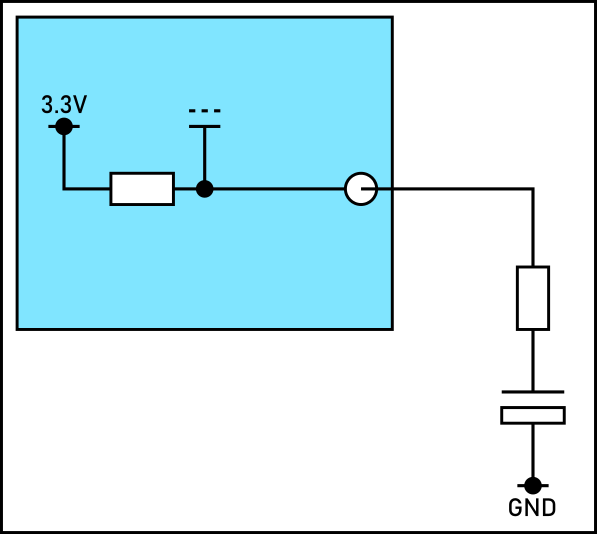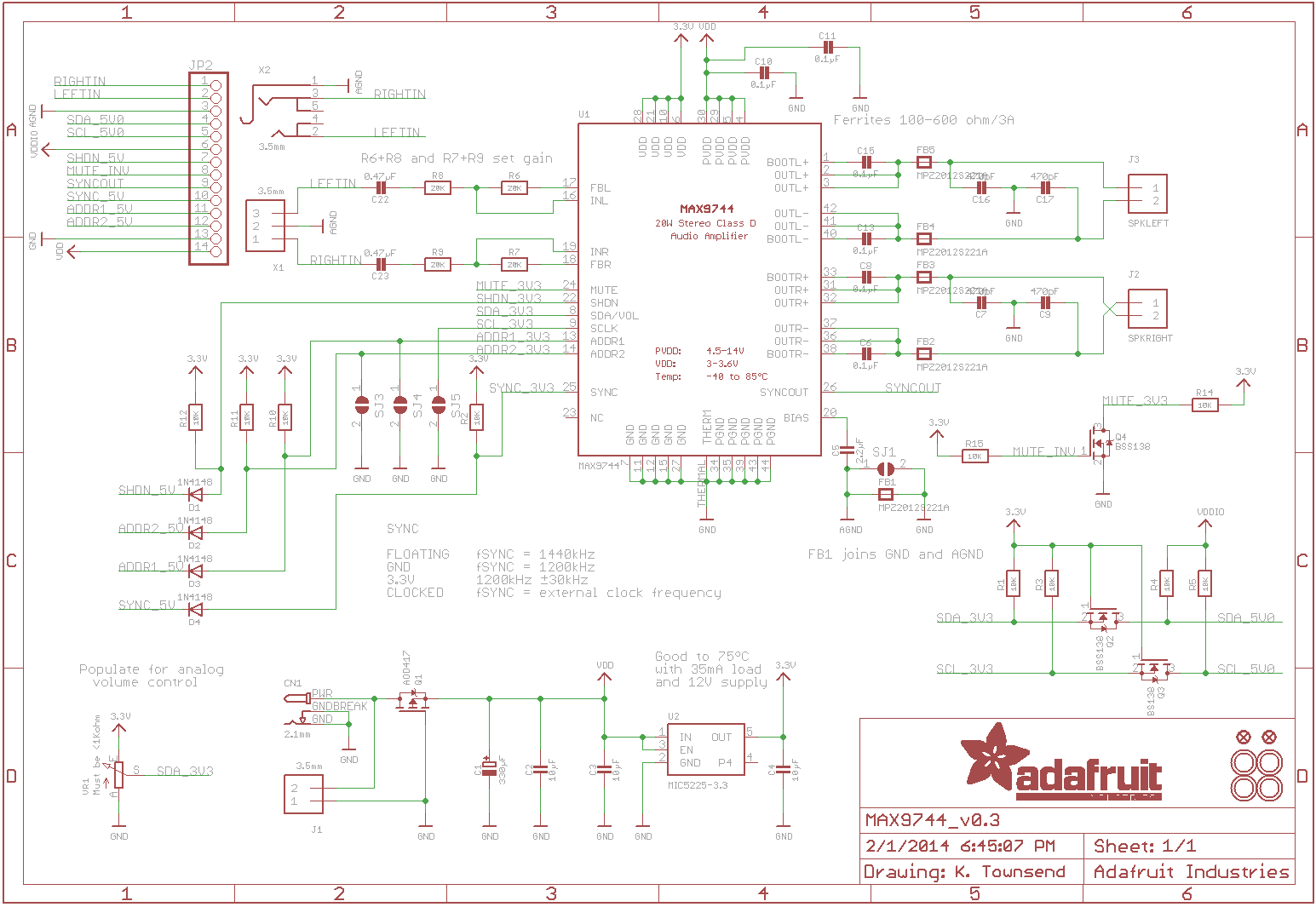For some time I have been aware of an annoying "bug" that I can not seem to squash. When the amp powers up and audio is playing you get a brief, about 1/4 second, blast at nearly full volume. This is due to the MAX amplifier chip starting at a reasonably high volume when it is first switched on. The chip does have a mute pin, which the Adafruit breakout board I am using does, well, breakout. I would love to use it but unfortunately I don't have any spare pins left from the Arduino Nano.
So I got to thinking, could I use a capacitor to hold the pin low while the amplifier started up. I ran some quick experiments and yes I can, with a big caveat: I can't figure out how to get the capacitor to discharge quickly when power is removed.
Here is a basic view of the circuit idea. The amp has the mute pin held high with a 10K resistor connected to the gate of a MOSFET that then connects to the mute pin on the amp chip (I haven't shown that part of the circuit). On the right is the simple RC timer I was thinking of using.

The values I thought about were 100uF for the capacitor and about 330R for the resistor. As it stands the capacitor doesn't discharge at all quickly, but any resistor I put in across it causes a potential divider to change the voltage at the gate of the MOSFET. I was hoping someone might be able to help point me in the right direction on this, or even if it is possible!
The full circuit for the Adafruit breakout board is here, the part of the circuit is in B5-C6

 smartroad
smartroad
Discussions
Become a Hackaday.io Member
Create an account to leave a comment. Already have an account? Log In.
Maybe use a cheap 8 pin MCU to hold down the pin for X seconds?
Are you sure? yes | no
Hi Ken,
Thanks for the reply. I had considered that but the thought of using an actual processor just to act as a delay timer (of about 1/2 a second) seems a little, excessive lol. However it did give me an idea, what about a 555 timer. You can get the chip for pence (compared to nearly a £1 for an Attiny25) with a few support parts and I have a timer that is cheap and keeps the amp muted while turning on. I have made a simple circuit that can hold the mute pin low for a set time (I've over compensated a bit and it is running for about 3 seconds LOL)
I'll add an update log about it soon. Not sure about how to integrate it into the existing circuit without adding to much additional PCB space needed.
Are you sure? yes | no
Someday it will not seem excessive to use a MCU for a task like this: https://hackaday.io/page/6911-padauk-3-mcu-resources At the moment it's only for the keen.
Are you sure? yes | no
The other thing I like about the 555 is that is easy for anyone to use. It's "programming" is done by simple, easy to obtain, passive components. It doesn't need additional relatively complicated hardware to be programmed. One of the things I wanted for this project is to keep it as easy as possible (both construction and purchasing) and the 555 is ubiquitous so can be found almost anywhere.
Are you sure? yes | no
True, but as soon as you want a bit more functionality, you find yourself surrounding the 555 with more components and the advantage diminishes. But that's for the future.
Are you sure? yes | no